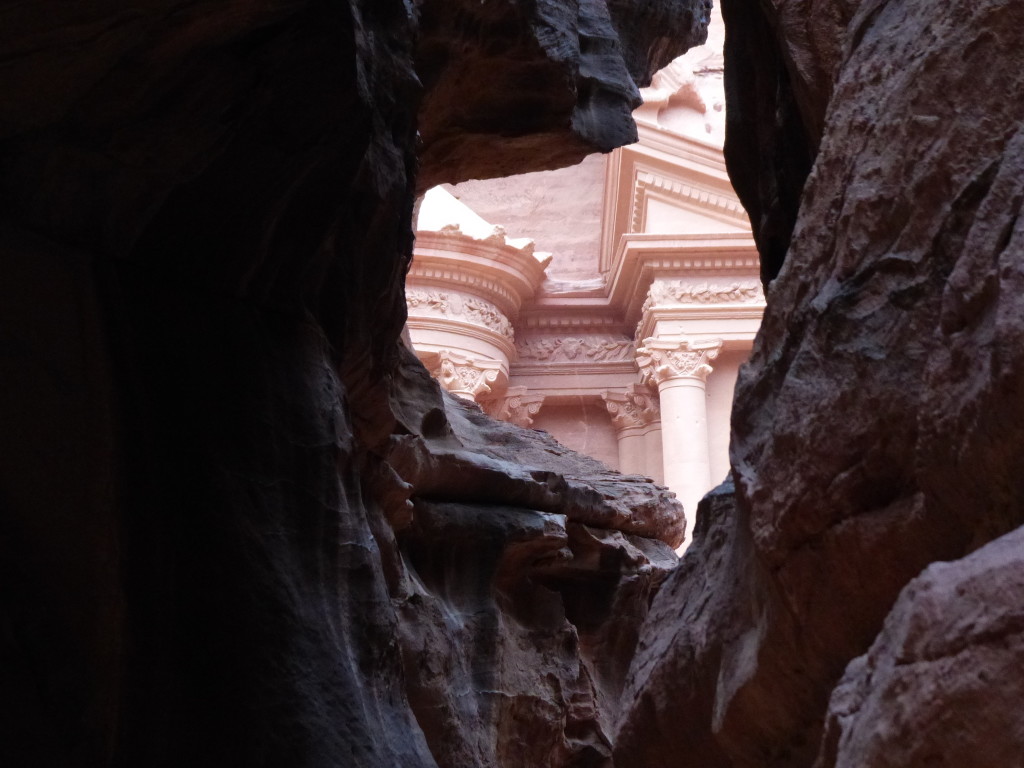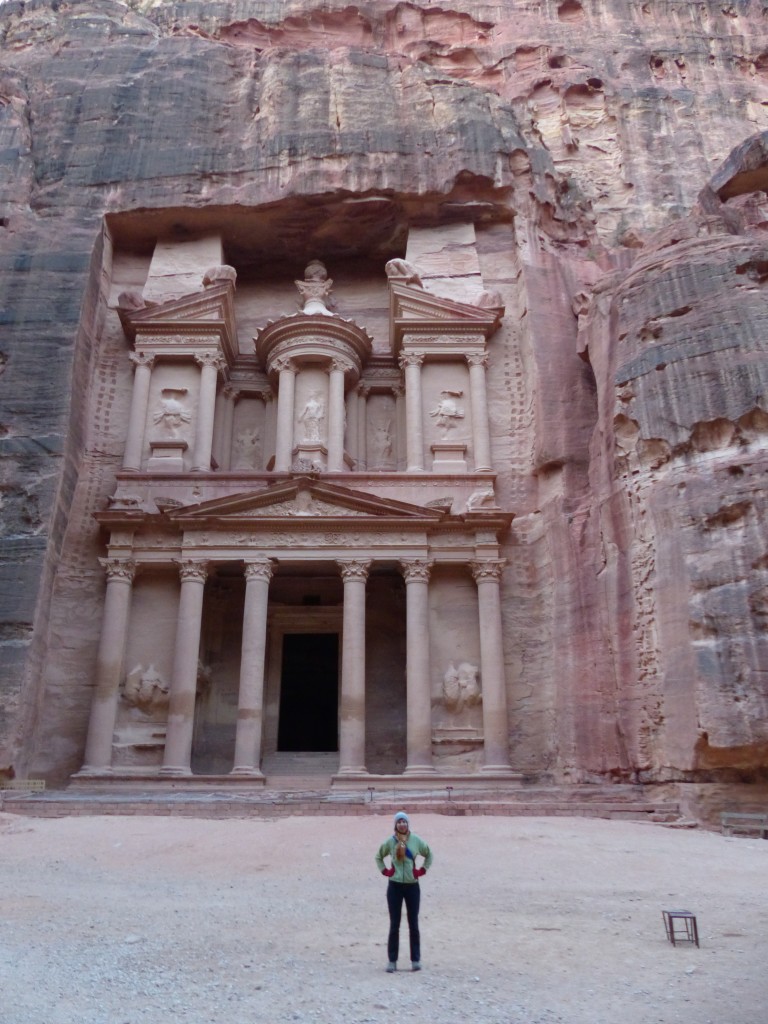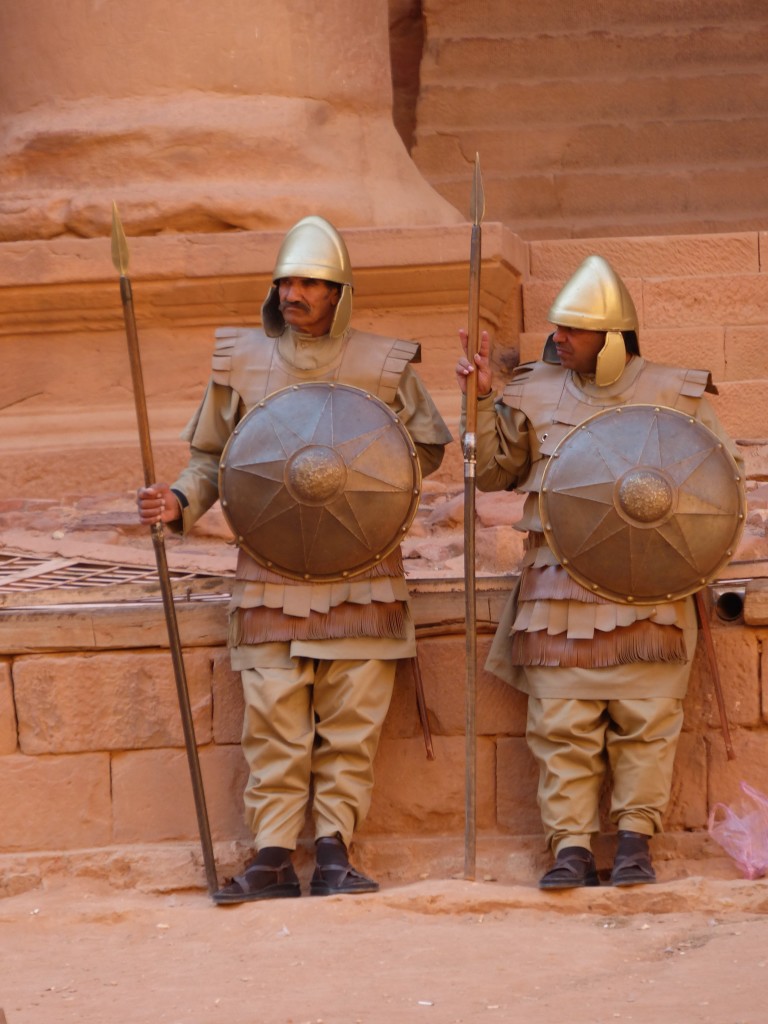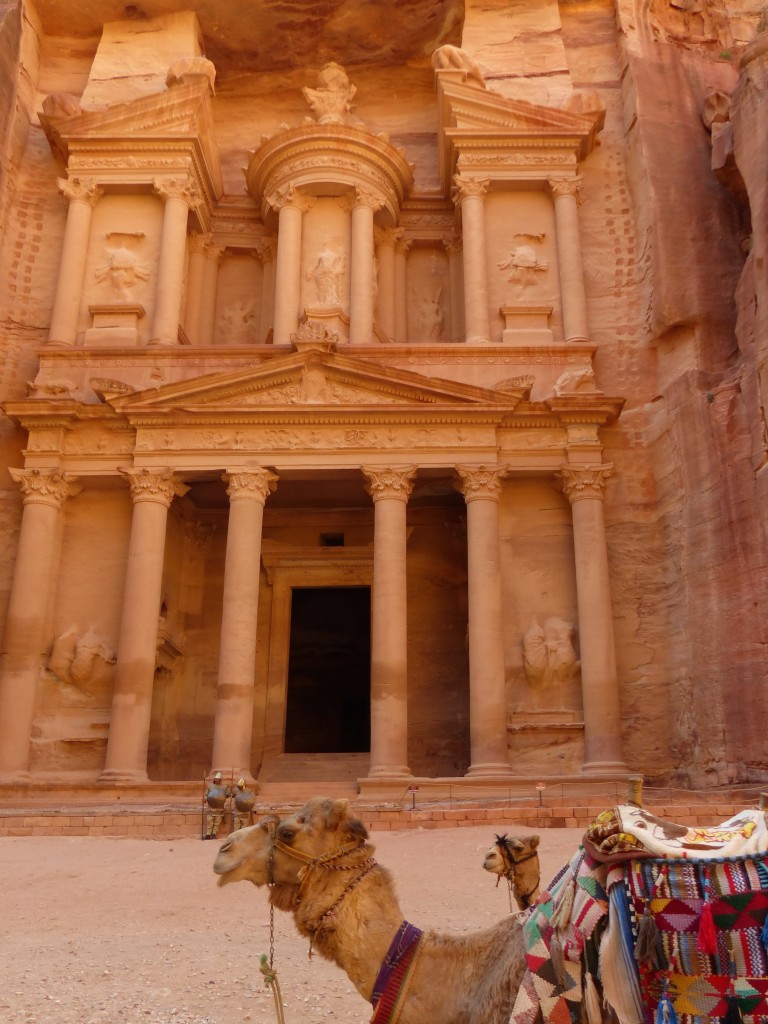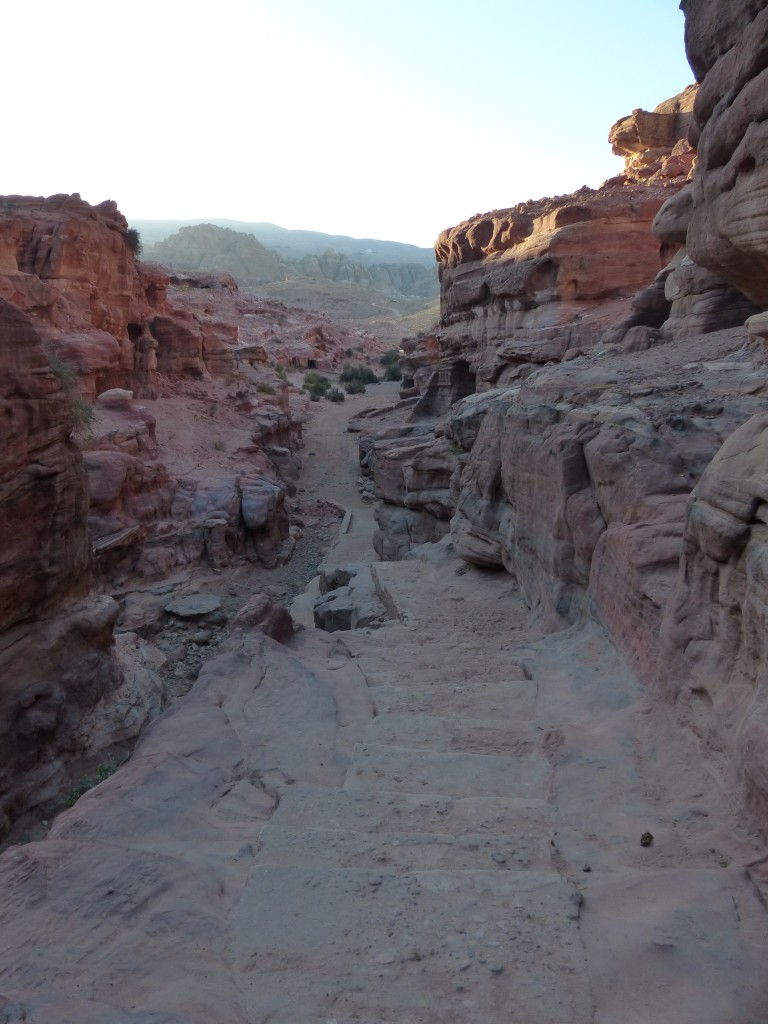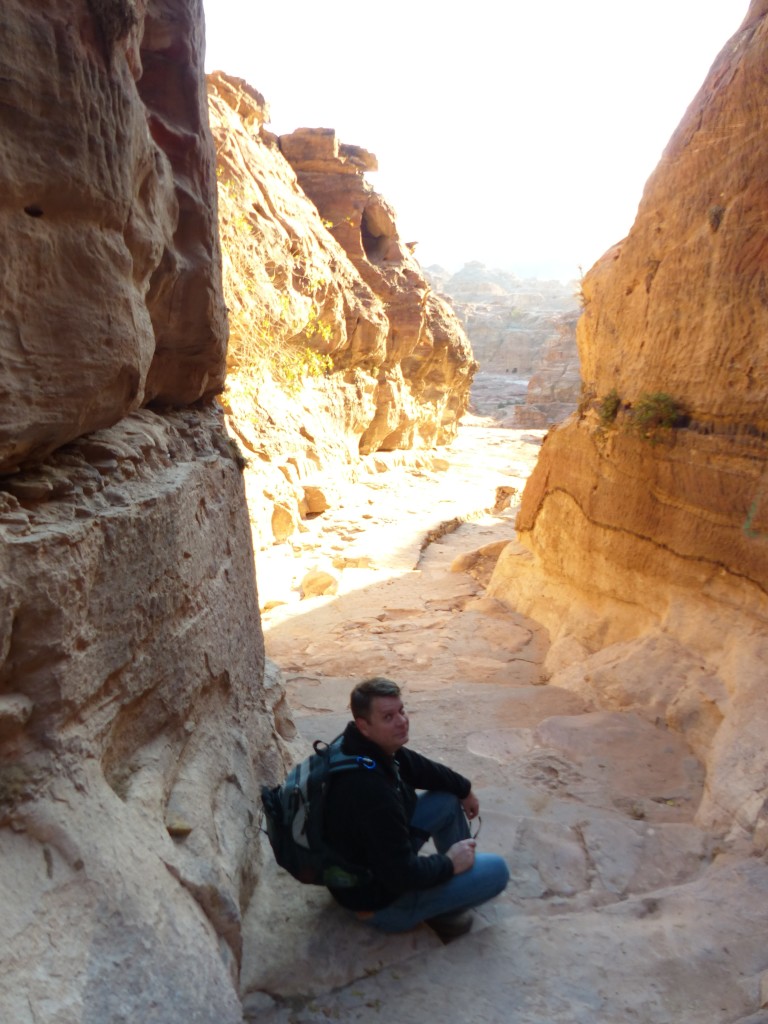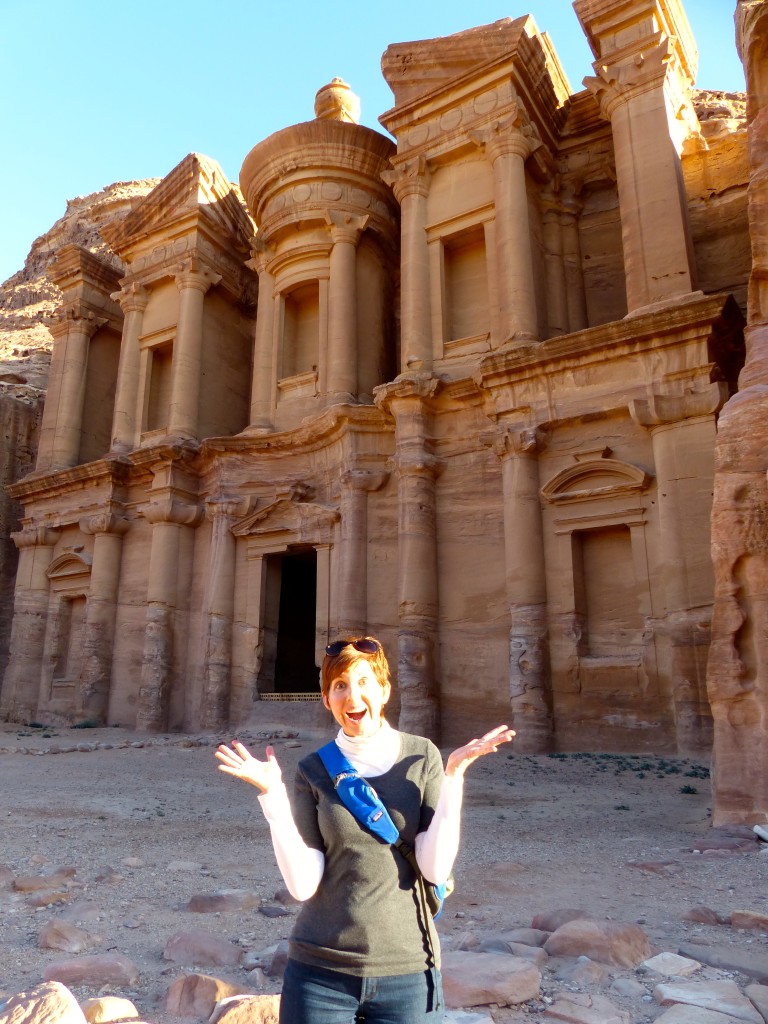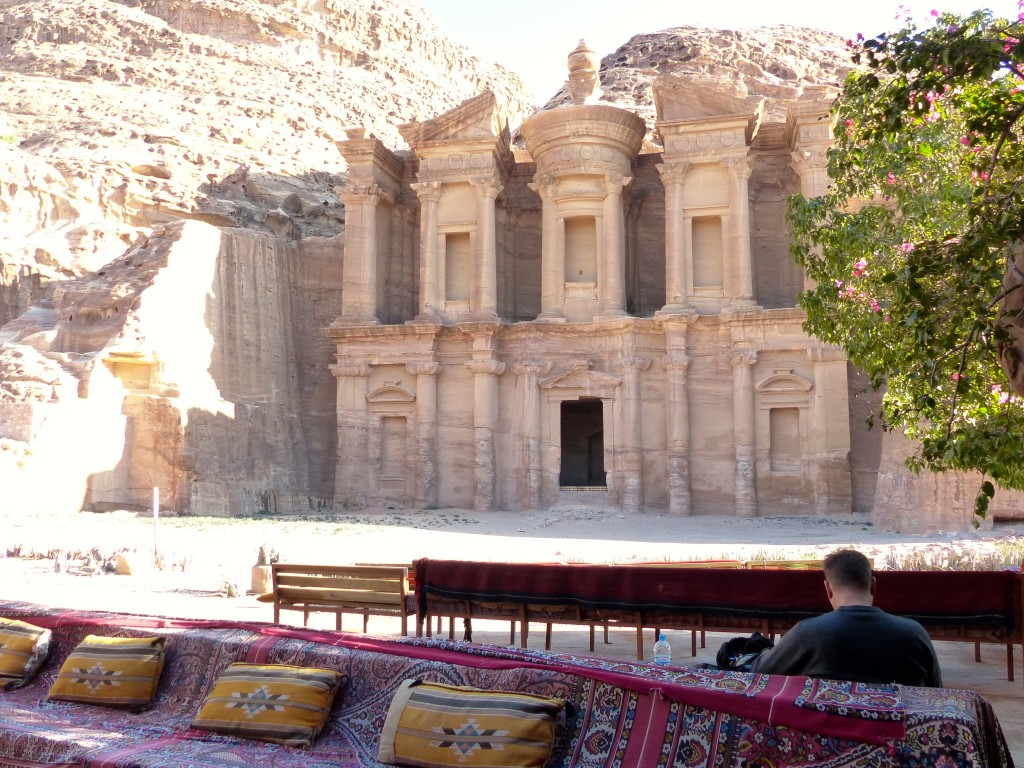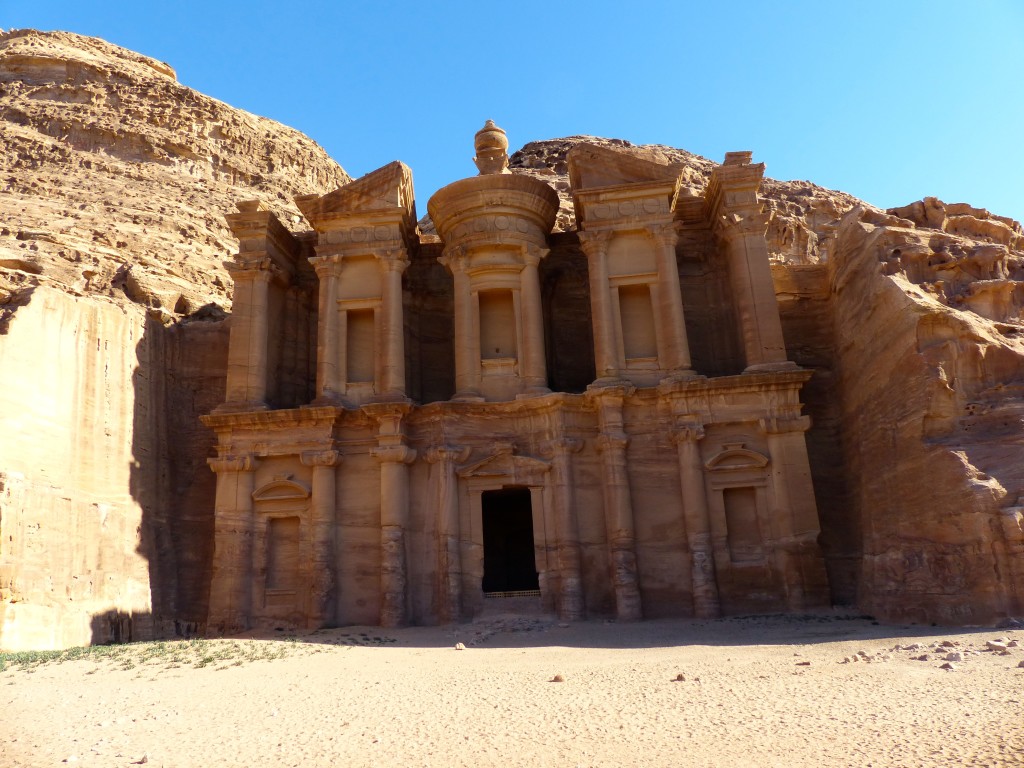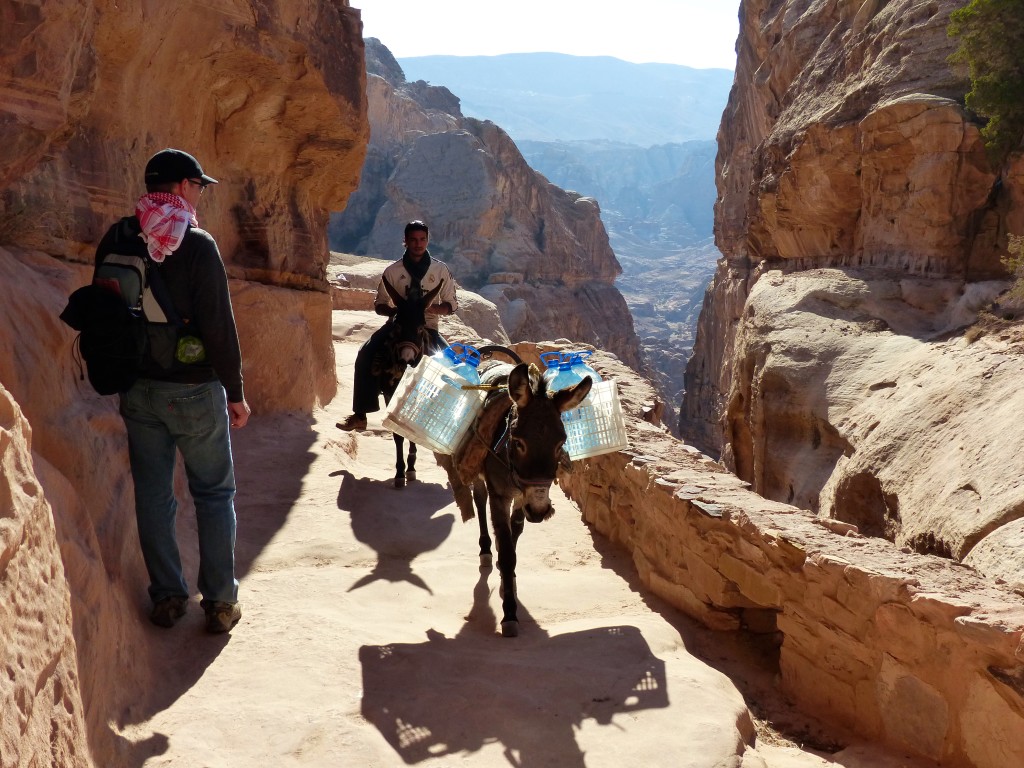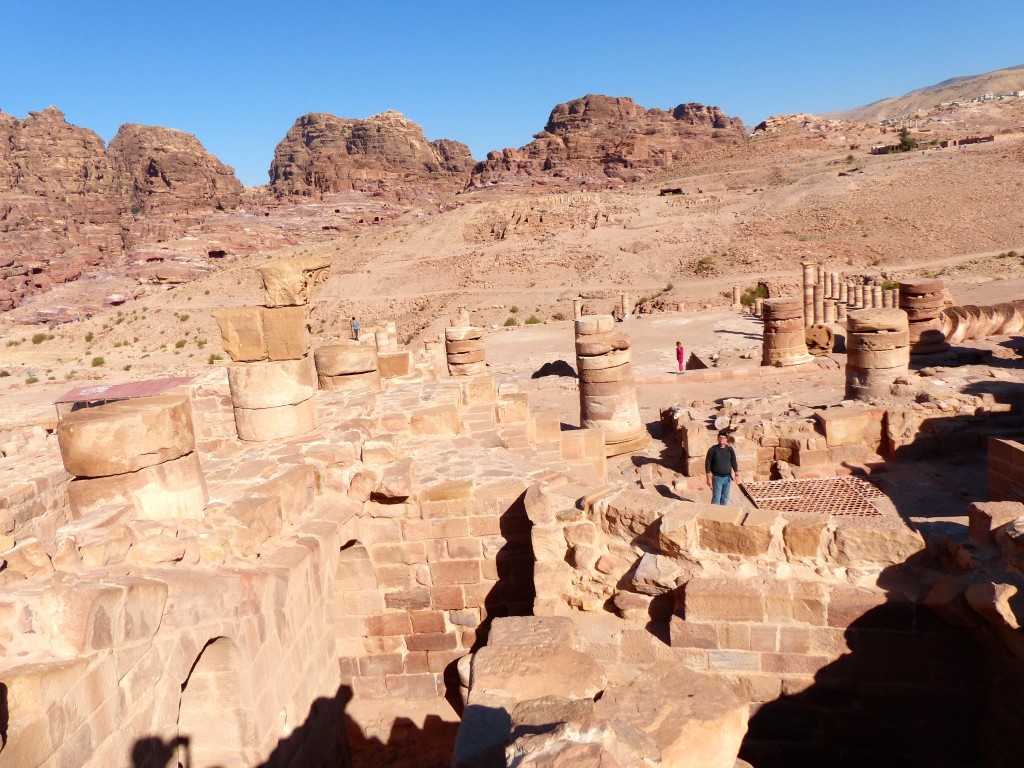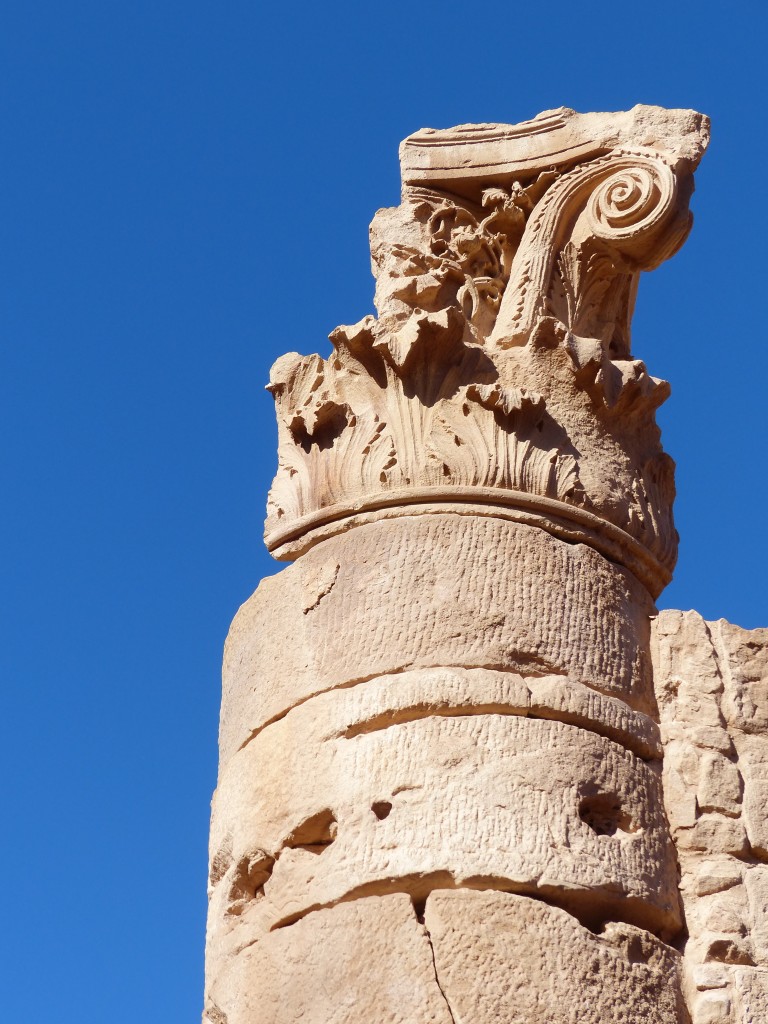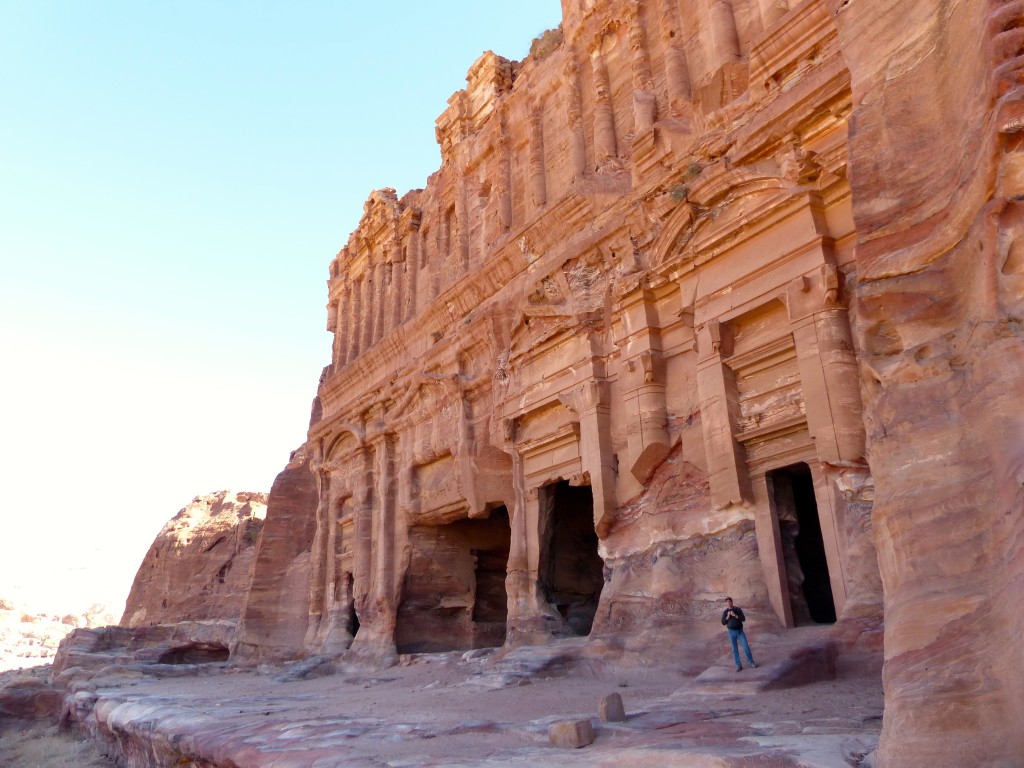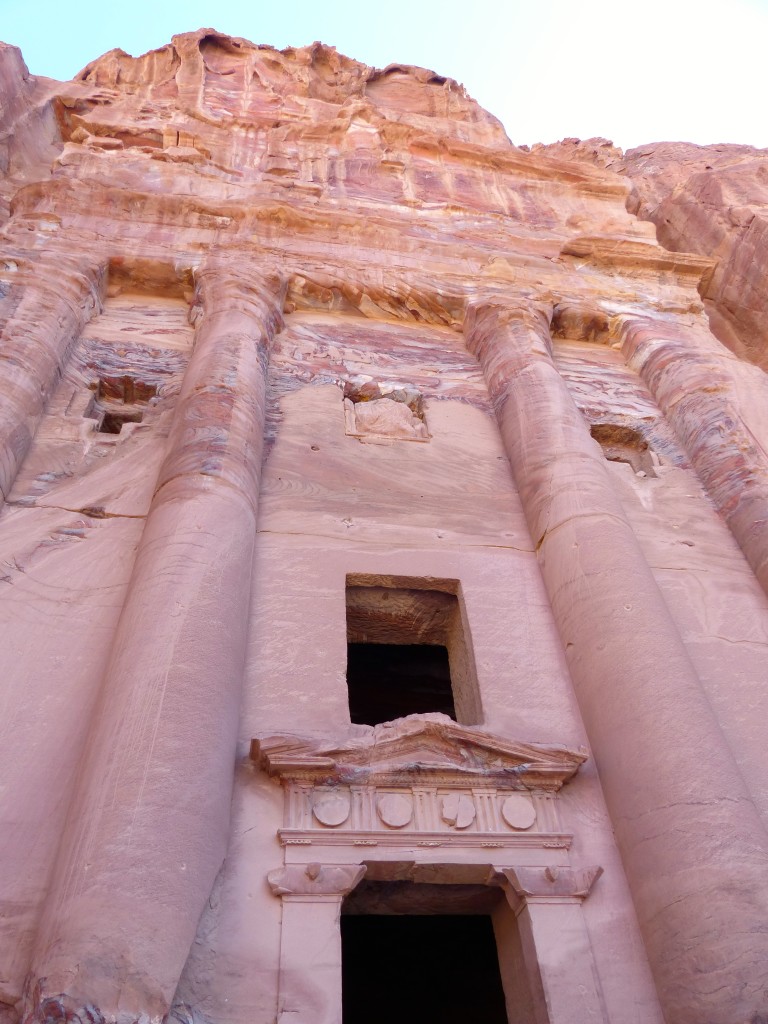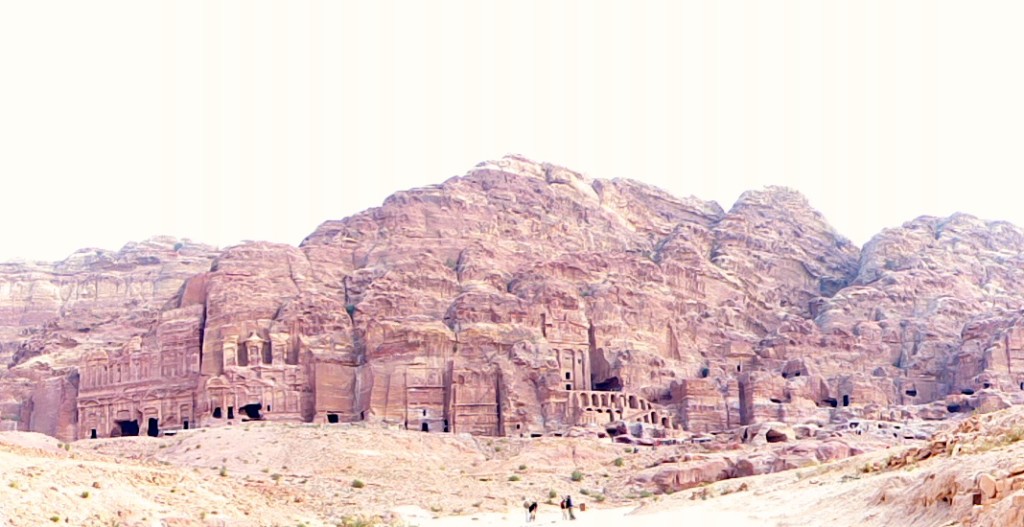The ancient city of Petra, carved into the sandstone mountains of southwest Jordan starting in the 4th century BC, is listed on nearly every website touting “The Top 25 Places You Should See Before You Die!”
Many travel bloggers say you can see the main archaeological sites in a day or less, but Tony and I easily could have spent weeks climbing the rocks, exploring the ruins, marveling at the morphing colors from dawn to dusk, and conjuring up mental movies of Nabataean life.
The Nabataeans were known for controlling trade routes and for hydraulic engineering systems, including water conservation systems, dams and an infrastructure for delivering water to the community through pipes and channels.
The Visit Petra website offers some background:
It is not known precisely when Petra was built, but the city began to prosper as the capital of the Nabataean Empire from the 1st century BC, which grew rich through trade in frankincense, myrrh, and spices. Petra was later annexed to the Roman Empire and continued to thrive until a large earthquake in 363 AD destroyed much of the city. The earthquake, combined with changes in trade routes, eventually led to the downfall of the city which was ultimately abandoned. By the middle of the 7th century Petra appears to have been largely deserted and it was then lost to all except local Bedouin from the area.
In 1812 a Swiss explorer named Johannes Burckhardt set out to ‘rediscover’ Petra; he dressed up as an Arab and convinced his Bedouin guide to take him to the lost city. After this, Petra became increasingly known in the West as a fascinating and beautiful ancient city, and it began attracting visitors and continues to do so today.
The Nabataeans buried their dead in intricate tombs that were cut out of the mountain sides and the city also had temples, a theater, and following the Roman annexation and later the Byzantine influence, a colonnaded street and churches. In addition to the magnificent remains of the Nabataean city, human settlement and land use for over 10,000 years can be traced in Petra, where great natural, cultural, archaeological and geological features merge.
Tony and I were the first in line at the entrance gate – with only a few others behind us – when Petra opened at 6 a.m. both Sunday and Monday. We started both days with challenging hikes that took us away from the regular stream of tourists, so we experienced Petra in peace for a few hours each morning. Being together and alone in such a mystical place made our visit even more special.
With a little help from “Indiana Jones and the Last Crusade,” Petra’s Treasury continues to mesmerize the world. The Siq, a split in the rock that creates a 1.2-kilometer path to the Treasury, helps to set a mysterious tone. We power walked from the visitors center to the Siq and then slowed down to appreciate the setting. Rock walls towered above us – some as high as 80 meters, and the path twisted and turned, refusing to provide a glimpse of what lay ahead. Finally, through the dark channel, we spotted the Treasury. Deserted at dawn, it was mobbed by early afternoon with tour groups, Bedouins hawking camel rides, Nabataean “guards” posing for photos, and other circus-like chaos.
The Treasury got its name because Bedouins thought the carved urn on top contained riches, but the Treasury’s real purpose is disputed. Some archaeologists think it was a temple; others believe it was used to store important documents. Unlike the sprawling and magical interior of the Indiana Jones movie, the Treasury comprises only three small chambers.
On our first visit, we headed straight for the Ad-Deir Monastery. Although many other interesting monuments and ruins lined the path, we tried not to dawdle. I had been warned about the crowds, and I wanted to hike in peace. We agreed to visit the rest of the sites later. The tortuous trail up the mountain included about 800 steps cut into the rock. At the top, we rounded a corner and saw another hill a short distance away. We figured that was our final destination. Stepping down a few stone steps, I looked to my right and realized we were there. The people on the hill were just enjoying the view!
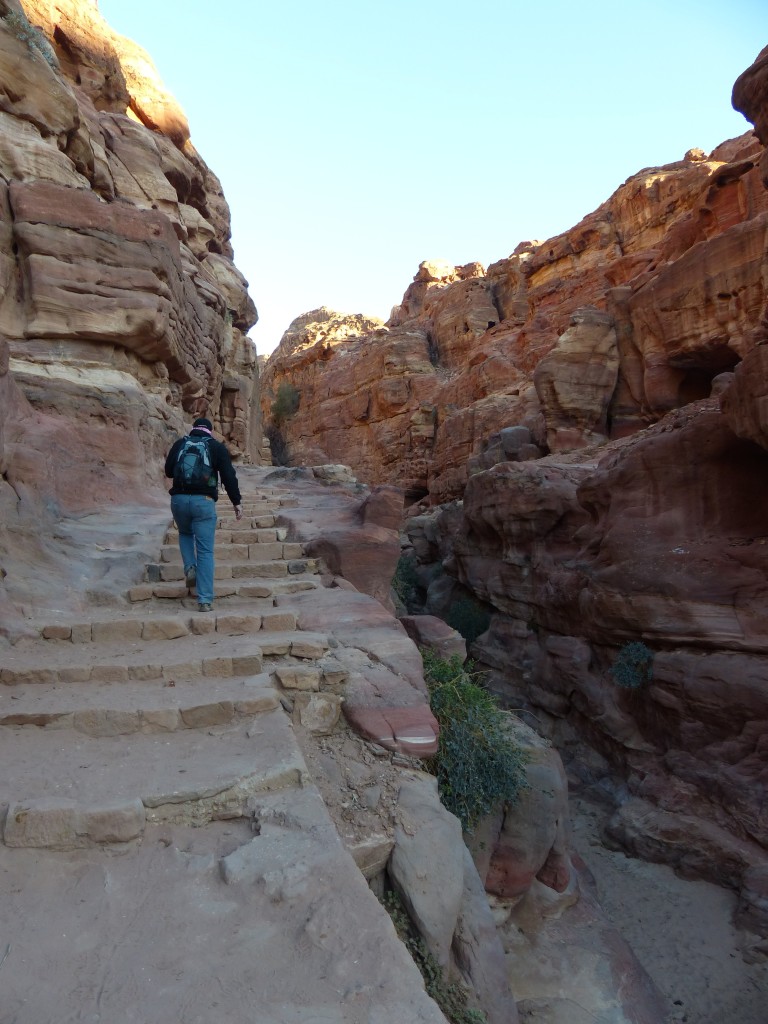
The monastery wasn’t really a monastery. It was most likely a 1st-century temple and may have been repurposed by later Christians, as evidenced by small crosses etched inside. The facade is huge, bigger but less fancy than the Treasury. That tiny dot in the doorway is Tony.
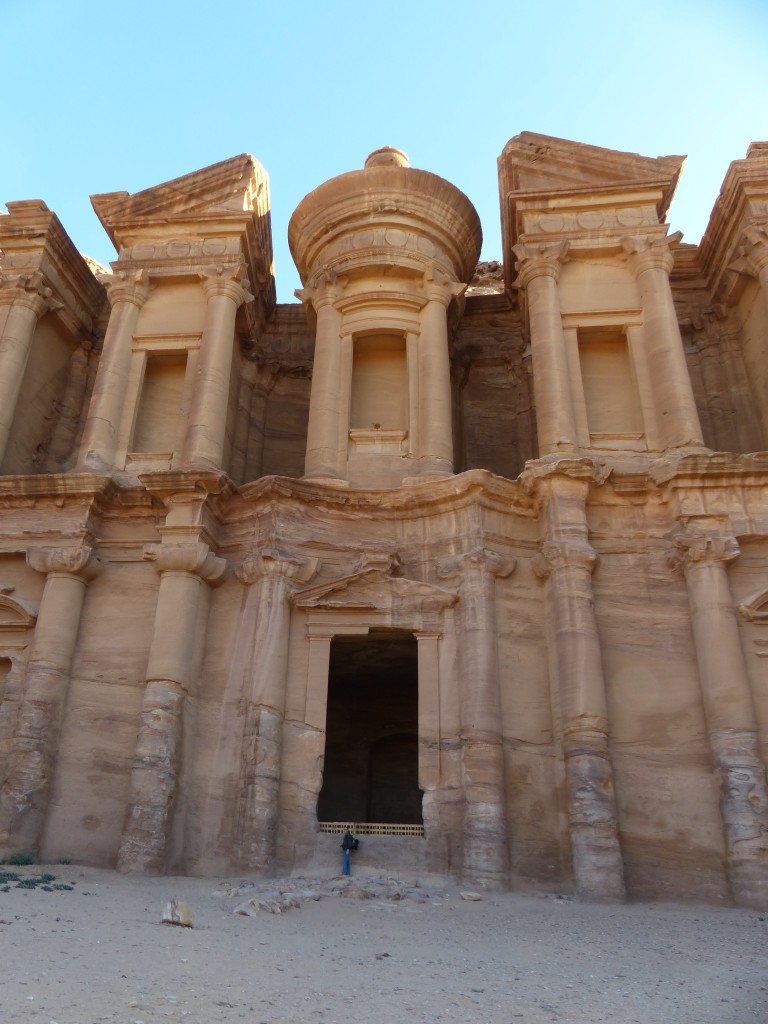
We climbed up the aforementioned hill to see the view, and then took a break at the tea stand opposite the monastery to eat our breakfast picnic.
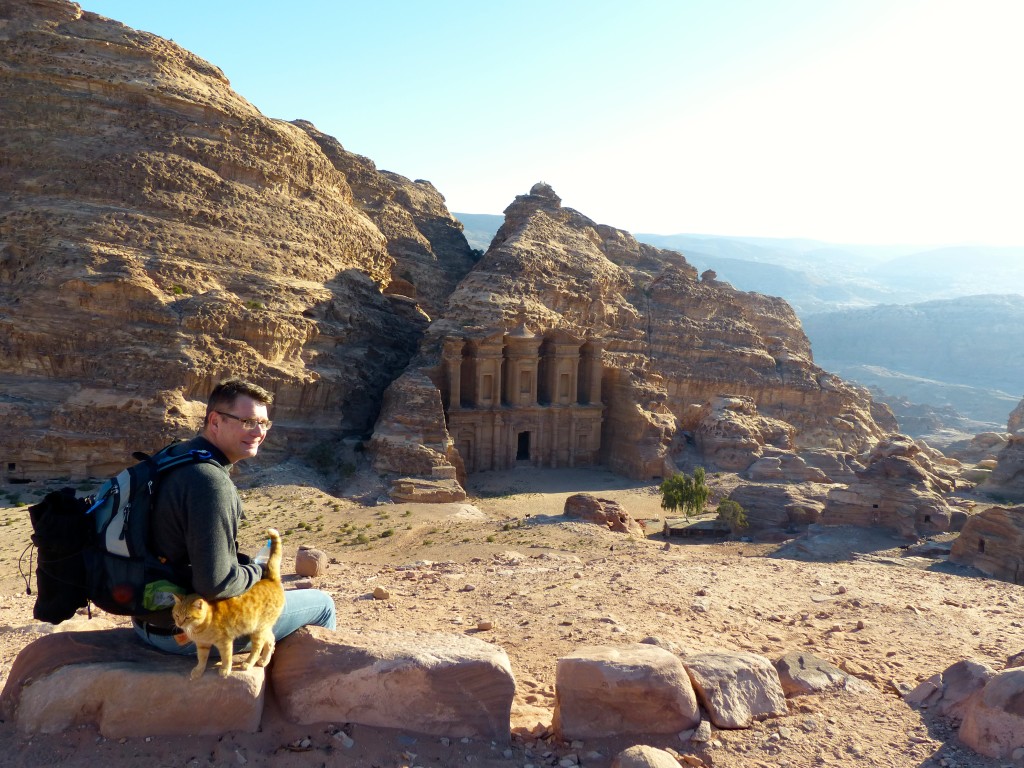
Back on Petra’s main drag, we tromped around the Great Temple. Brown University (Providence, Rhode Island) heads up the international excavation project of the temple and has documented their work, as well as lots of great history, on their website: Petra – The Great Temple Excavation.
The temple is the largest freestanding structure in Petra, but there were no physical signs of its existence before Brown began its excavation in 1993.
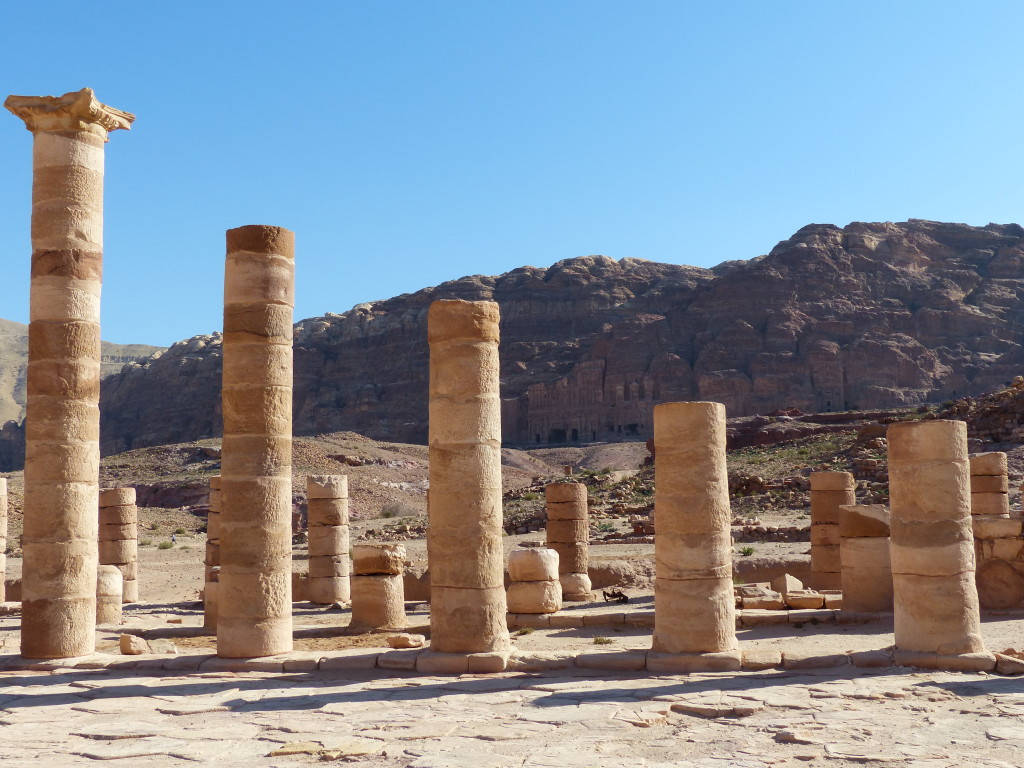
AES 10th graders: This word will be on your test over Oedipus. Don’t say I didn’t warn you.
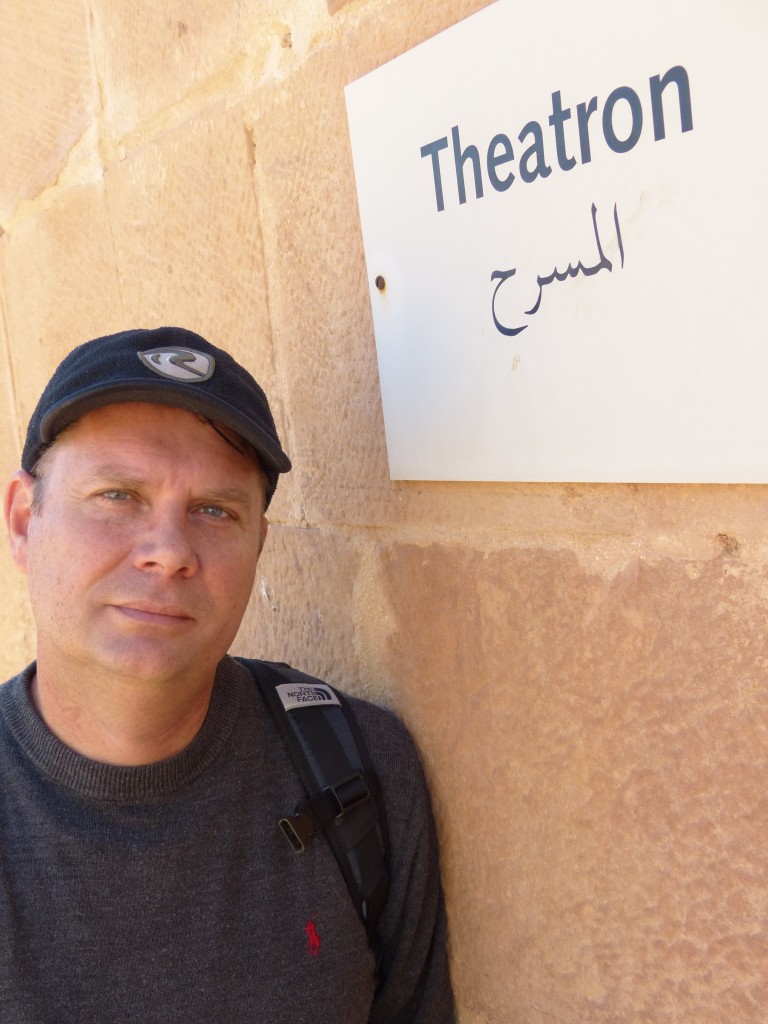
We also explored the Royal Tombs, which were carved to house the tombs of Nabataean dignitaries. Despite the obvious erosion, I found this strip of facades even more impressive than the iconic Treasury.
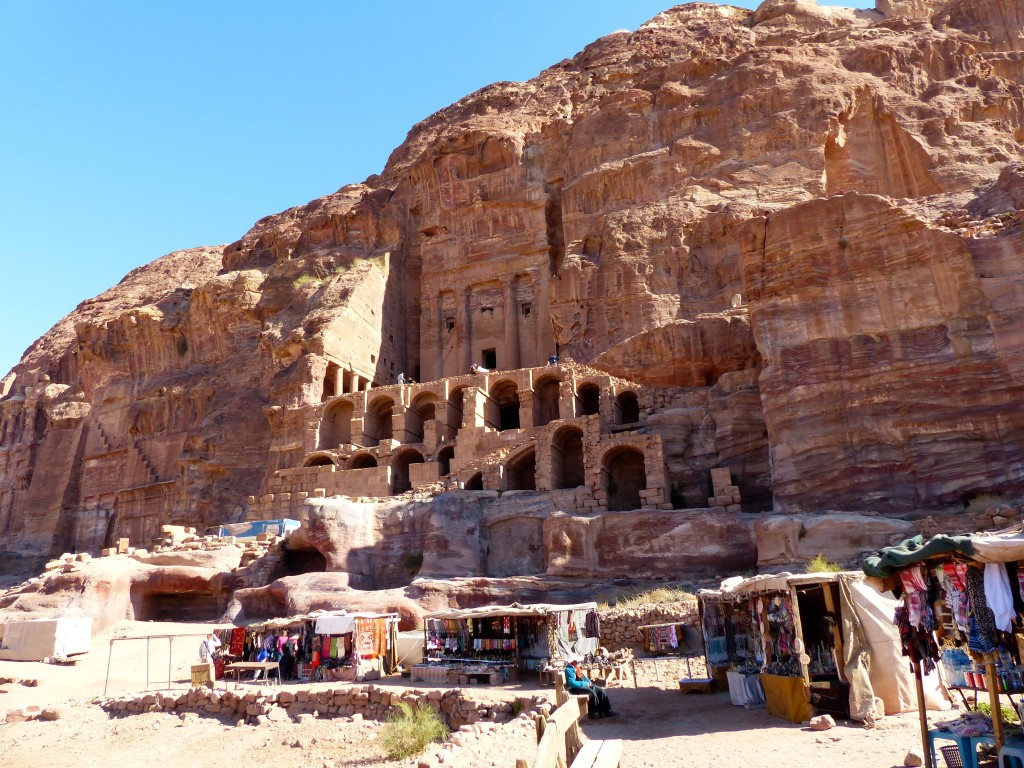
Later that evening, we walked to Petra Kitchen for a “cuisine class.” I forgot my camera – doh! I was hoping for an intimate experience of culinary stories and traditions, but there were about 20 people and the fast-paced class aimed to introduce us to many different local dishes. We chopped tomatoes, garlic, chilis, parsley, onions, and roasted eggplant. I kneaded some dough for a few seconds and stirred a pot of lentil soup, but otherwise the cooks did all the work. (Don’t get me wrong. The cooks were informative and helpful, and we even saw them the next morning in the Movenpick Hotel restaurant, so they clearly know their stuff!) Mostly, it was an evening to meet people and eat delicious Jordanian dishes. We “made” and devoured lentil soup, babaganoush, fatoosh salad, tahina salad, tabbouleh, cucumber and yogurt salad, galayat bandura (a hot tomato-y dip or spread), sambousek (small pastries with cheese or thyme toppings), and magluba (a one-dish meal of rice, chicken and vegetables that means “upside down” because you invert the pot onto the serving dish). We chatted with people from the Netherlands, Russia, Australia, and … Michigan (but they live in Singapore). Fun!

